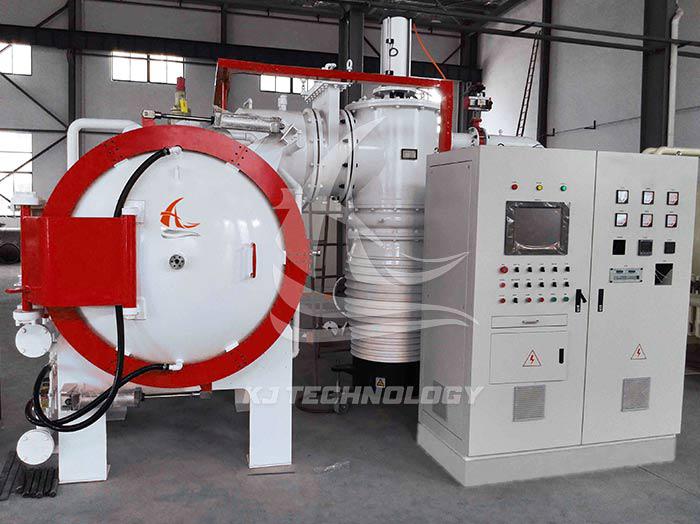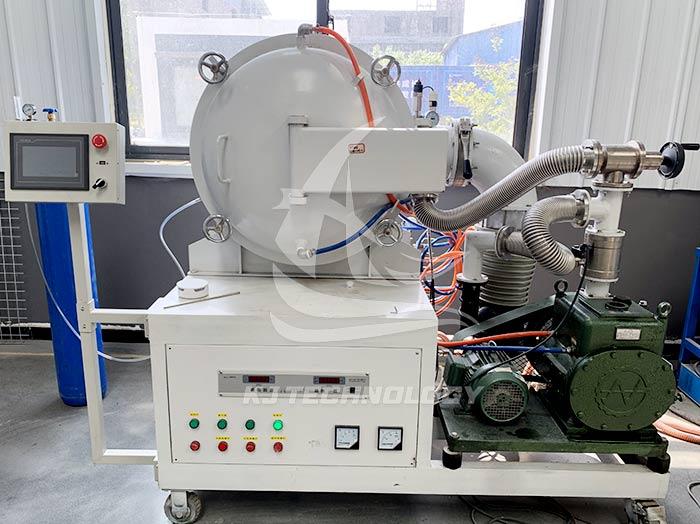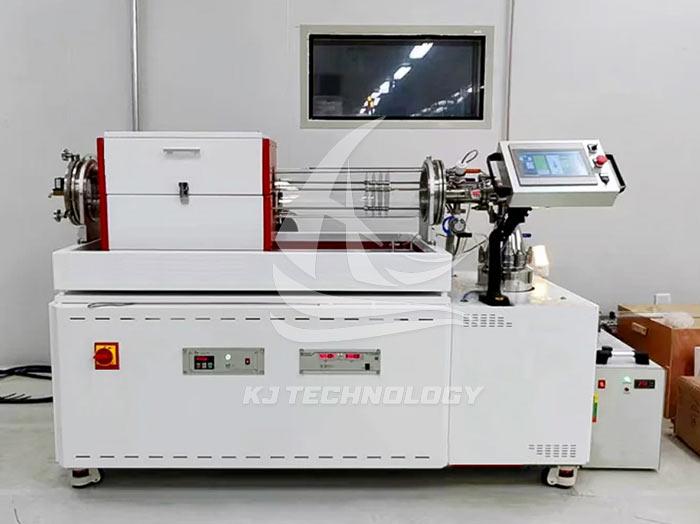High vacuum heat treatment electric furnace sintering powder
 09-26-2025 Author: KJ technology
09-26-2025 Author: KJ technology
High vacuum heat treatment electric furnaces have significant advantages in sintering powders. By eliminating gas interference and promoting atomic diffusion recombination, they significantly improve material density and performance, making them suitable for the preparation of active metals, hard alloys, and special compounds. The following is a detailed introduction to its sintered powder:
1. Working principle
The high vacuum heat treatment electric furnace extracts air from the furnace through a vacuum pump, creating an almost perfect vacuum environment (with a vacuum degree of up to 10 ⁻³ Pa to 10 ⁻⁴ Pa). In such an environment, powdery or granular substances undergo physical and chemical changes such as viscous flow, diffusion, evaporation, etc., and combine into a sturdy whole. This process effectively prevents oxygen and other gases from reacting with the material, thereby maintaining the purity of the material.
2. Heating method
High vacuum heat treatment electric furnaces can adopt various heating methods, including resistance heating, induction heating (such as medium frequency induction heating), and microwave heating. These heating methods can achieve the desired sintering temperature quickly and safely without damaging the material. For example, resistance heating generates heat through electric heating elements (such as carbon pipes, carbon rods, etc.), while induction heating uses the principle of electromagnetic induction to generate eddy currents inside the material, thereby achieving heating.
3. Control measures
In order to ensure the stability and reliability of the sintering process, the high vacuum heat treatment electric furnace is equipped with an advanced temperature control system. This system is responsible for monitoring temperature changes during the sintering process to ensure that the temperature remains stable within the set range. In addition, according to different working objects and material characteristics, corresponding atmospheres can be selected for sintering, such as filling with protective gases such as hydrogen and nitrogen, to improve the densification and performance of the product.
4. Application advantages
Reducing the impact of harmful gases: The high vacuum environment effectively eliminates easily soluble gases such as water vapor, hydrogen, and oxygen, while solving the problem of difficult to escape gases such as nitrogen due to their low solubility. This significantly reduces the formation of pores and improves the density of the material.
Promoting atomic diffusion and recombination: The vacuum environment is conducive to the diffusion and recombination between atoms, thereby optimizing the microstructure of the material and improving the mechanical properties of the product.
Inhibition of material oxidation: Under vacuum conditions, the oxidation reaction on the surface of the material is effectively suppressed, reducing volatilization loss and maintaining the purity of the material.
Easy process operation: High vacuum heat treatment electric furnaces usually adopt an integrated design of dewaxing sintering, which reduces the difficulty of product oxidation and carbon control. At the same time, the elimination of fillers simplifies the operation process and avoids the adverse effects of fillers on the surface of the sintered body.
5. Application Fields
High vacuum heat treatment electric furnaces have wide applications in powder metallurgy, ceramic materials, metal materials, composite materials and other fields. For example:
Active metal sintering: sintering of refractory metals such as titanium and tantalum, effectively preventing metal oxidation at high temperatures in a vacuum environment.
Preparation of hard alloys: Vacuum sintering helps to improve the purity and properties of hard alloys, such as improving the wetting of hard phases by drilling and enhancing alloy strength.
Preparation of special compounds: For compounds that are prone to react with gases such as hydrogen, nitrogen, and carbon monoxide, vacuum sintering provides an ideal preparation environment.








